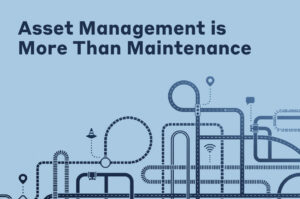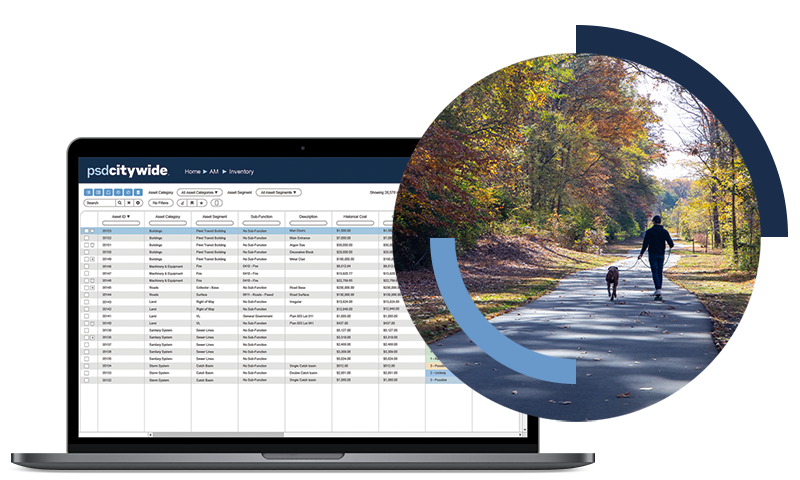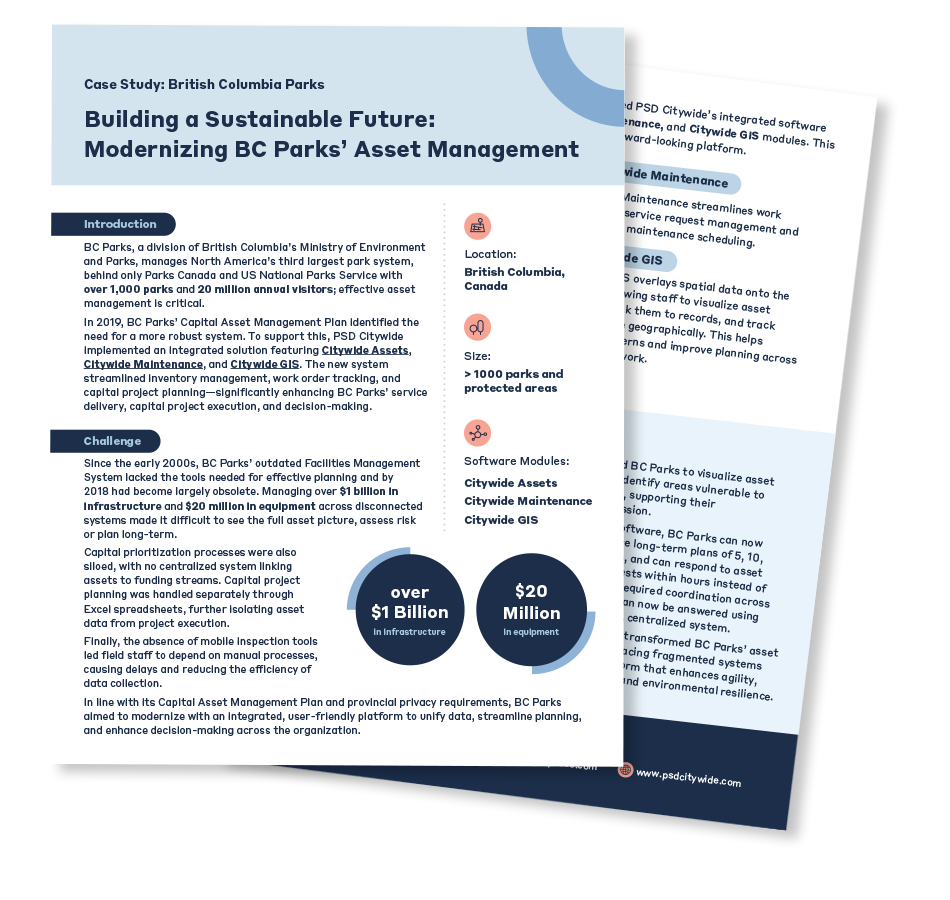
Asset Management is More Than Maintenance
eBooks and Studies Download your free copy today Asset Management is More Than Maintenance Go beyond Maintenance Management. Discover what Asset Management means and how it can revolutionize your municipal

Citywide Maintenance puts all your park assets and maintenance data in one place. Map trails, schedule inspections, track work orders, and visualize assets with GIS—anytime, anywhere, online or offline—so your parks stay safe, accessible, and well-maintained.
Stay on top of your conservation area and parks’ upkeep by tracking regular maintenance and repairs in one easy-access data system. Monitor inspections and preventative maintenance schedules in a timely and labour-efficient way.
Get an instant overview of your assets’ condition, risks, and replacement expenses. Prepare confidently for what’s next with targeted asset management strategies and plans.
Keep track of all your conservation area and park assets visually. Manage protected areas, map natural capital, and easily visualize asset location based on any criteria from anywhere.
Easily monitor and maintain walking trails and park pathways. Track inspection routes, log maintenance tasks, and quickly identify areas needing attention—all from the Citywide Mobile app.
Citywide Spaces gives you a clear view inside every building, helping you track rooms, capacity, bookability, and linked assets. Integrated with Citywide Assets and Maintenance, it connects condition, usage, and history for smarter planning and improved facility performance.

BC Parks needed a scalable, GIS-integrated system to manage over 100,000 assets spread across remote conservation areas. With Citywide software, they centralized data, improved long-term planning, and empowered field staff with mobile tools—even in offline environments.
Discover how Citywide software helps conservation authorities work smarter.
Asset Management is the way by which organizations, institutions, and governments make decisions about their tangible assets, such as roads, sidewalks, vehicles, and equipment such as computers, desks, and benches. Successful asset management ensures that assets continue delivering value over time. Collecting information about asset age, condition, and history allows organizations to analyze their costs and risks, laying the foundation for efficient planning, prioritization, and investment decisions.
As defined by the Institute of Asset Management (IAM), asset management is “the balancing of costs, opportunities and risks against the desired performance of assets to achieve an organization’s objectives.” It also supports organizations in assessing how well assets are performing—and whether they’re still needed.
To learn more about asset management and how it can enhance your operational performance, read our Ultimate Guide to Asset Management.
Citywide Assets allows organizations to track their assets across their entire lifecycle, collecting condition assessment, risk analysis, and custom attribute data to provide a full picture.
Check out our eBrochure for detailed information about what Citywide Assets can do for you.
PSD Citywide offers a truly unified cloud-based platform with extensive asset management capabilities, maintenance management efficiencies, budget simplification, and eGIS integration. Citywide Assets is a part of the Citywide Platform, eliminating the need for costly integrations by seamlessly enabling data-sharing with Citywide Maintenance and Citywide GIS.
Click here to learn more about how PSD Citywide’s Enterprise Asset Management Platform works together.

eBooks and Studies Download your free copy today Asset Management is More Than Maintenance Go beyond Maintenance Management. Discover what Asset Management means and how it can revolutionize your municipal

A global health crisis – resulting in an economic downturn – reminds us once again of the challenges faced by municipal practitioners. Municipal staff continue to serve their community as